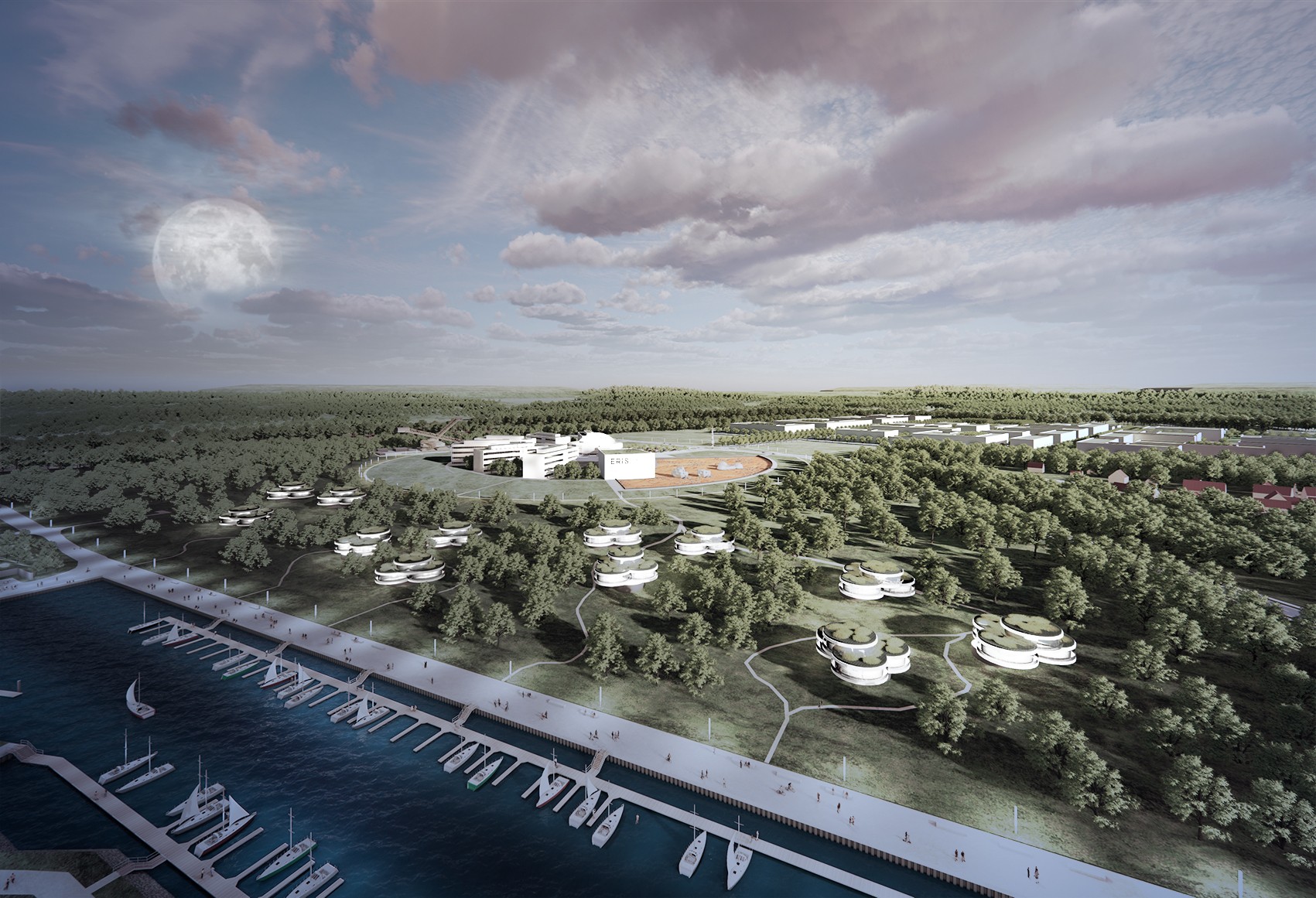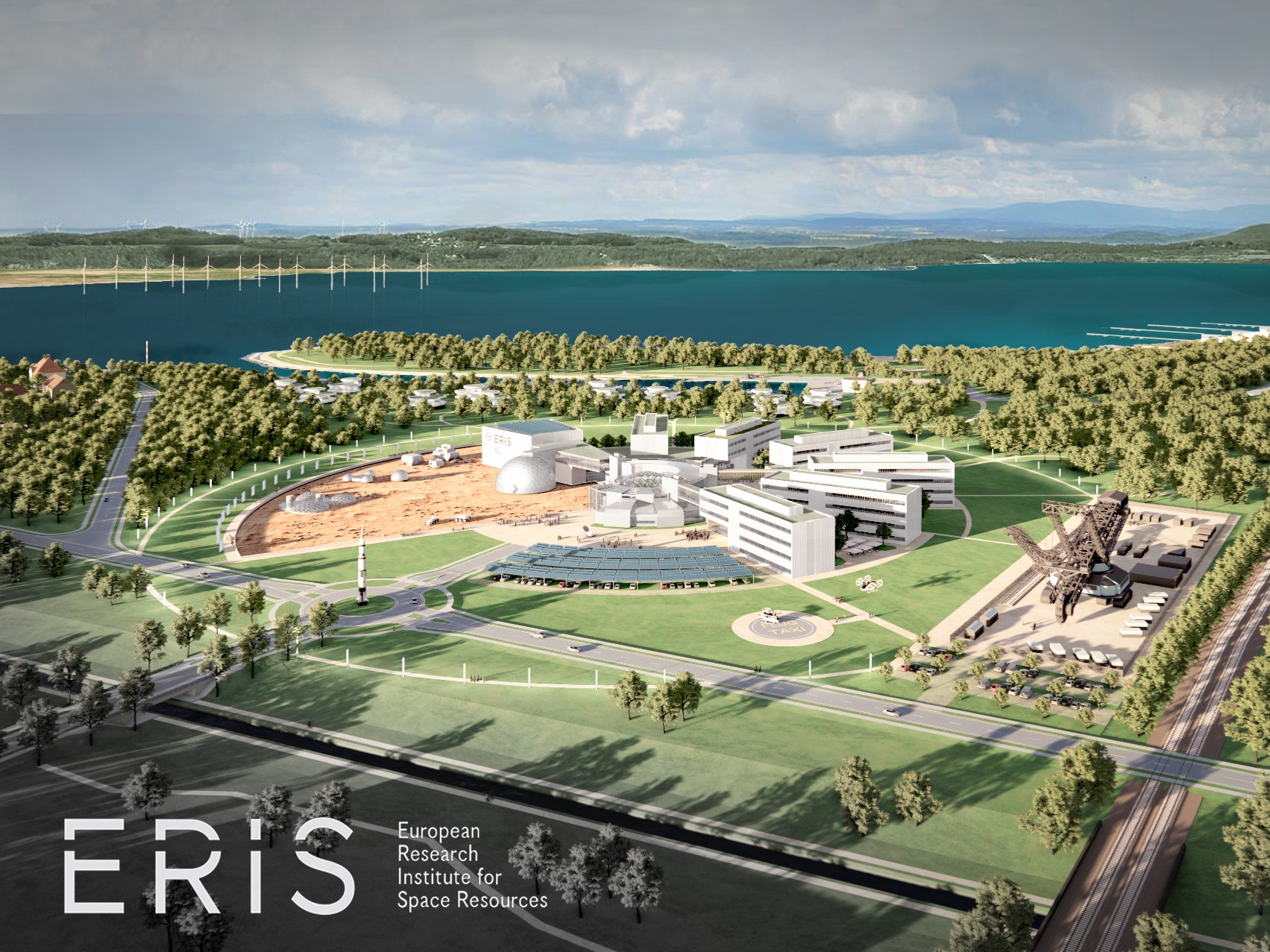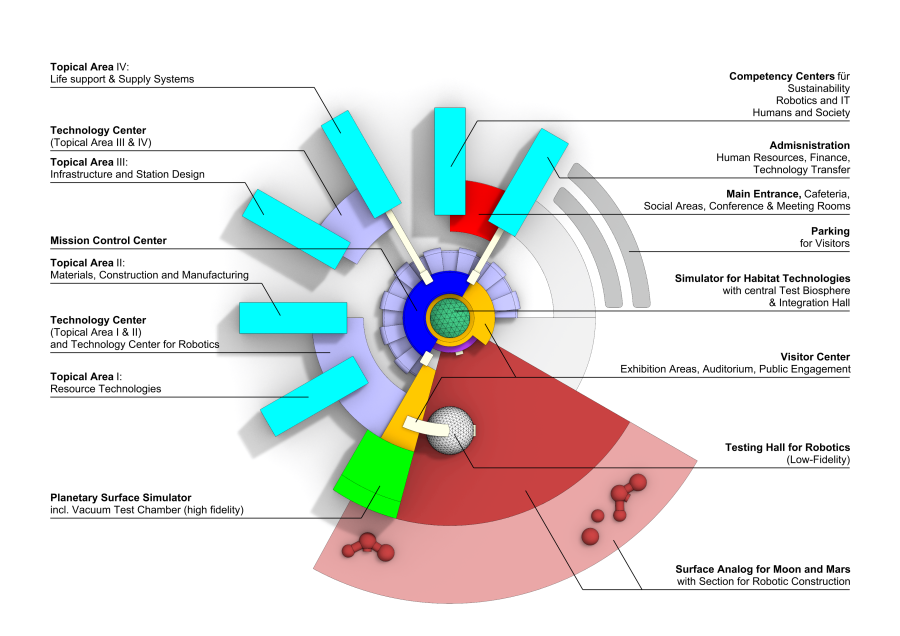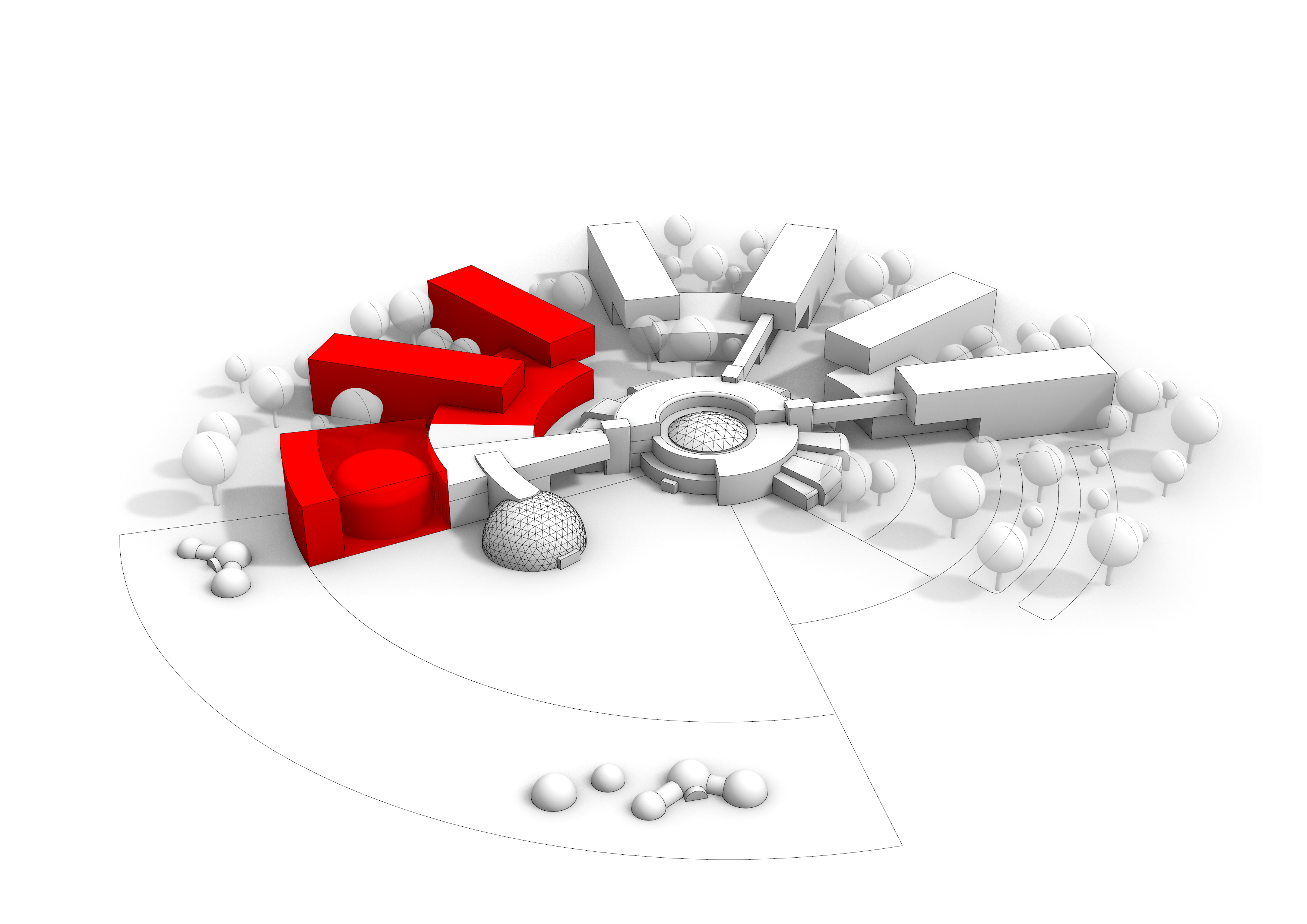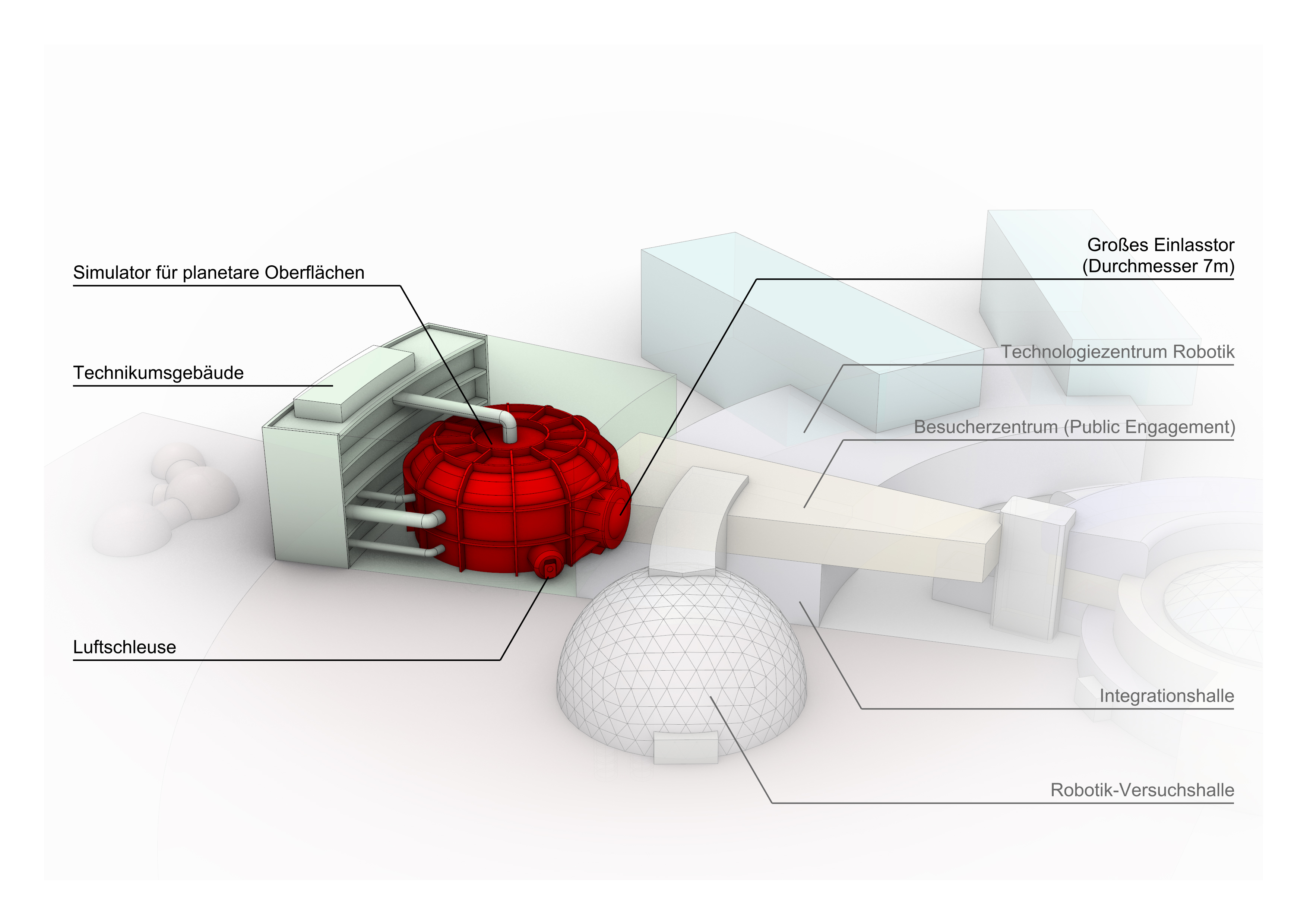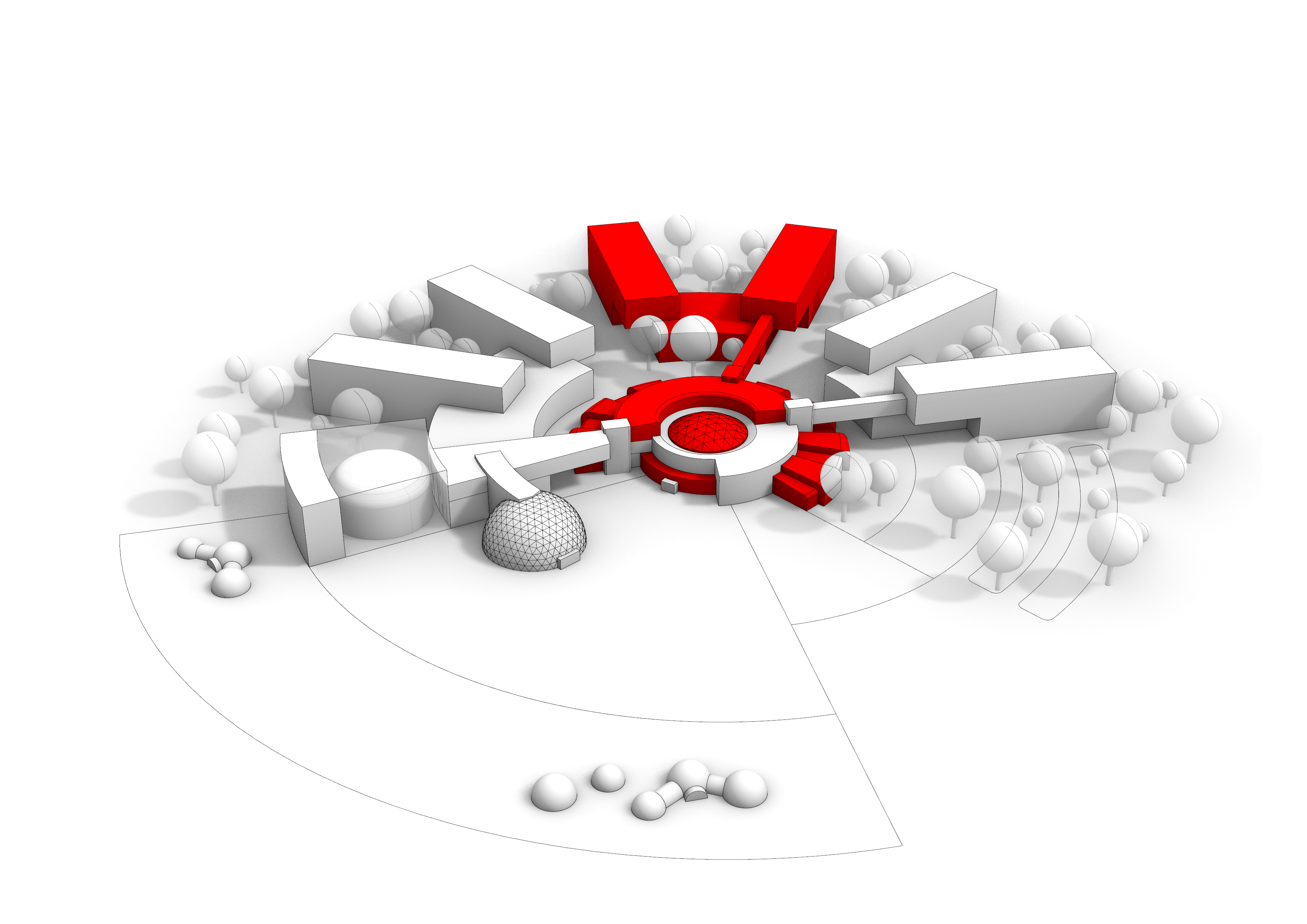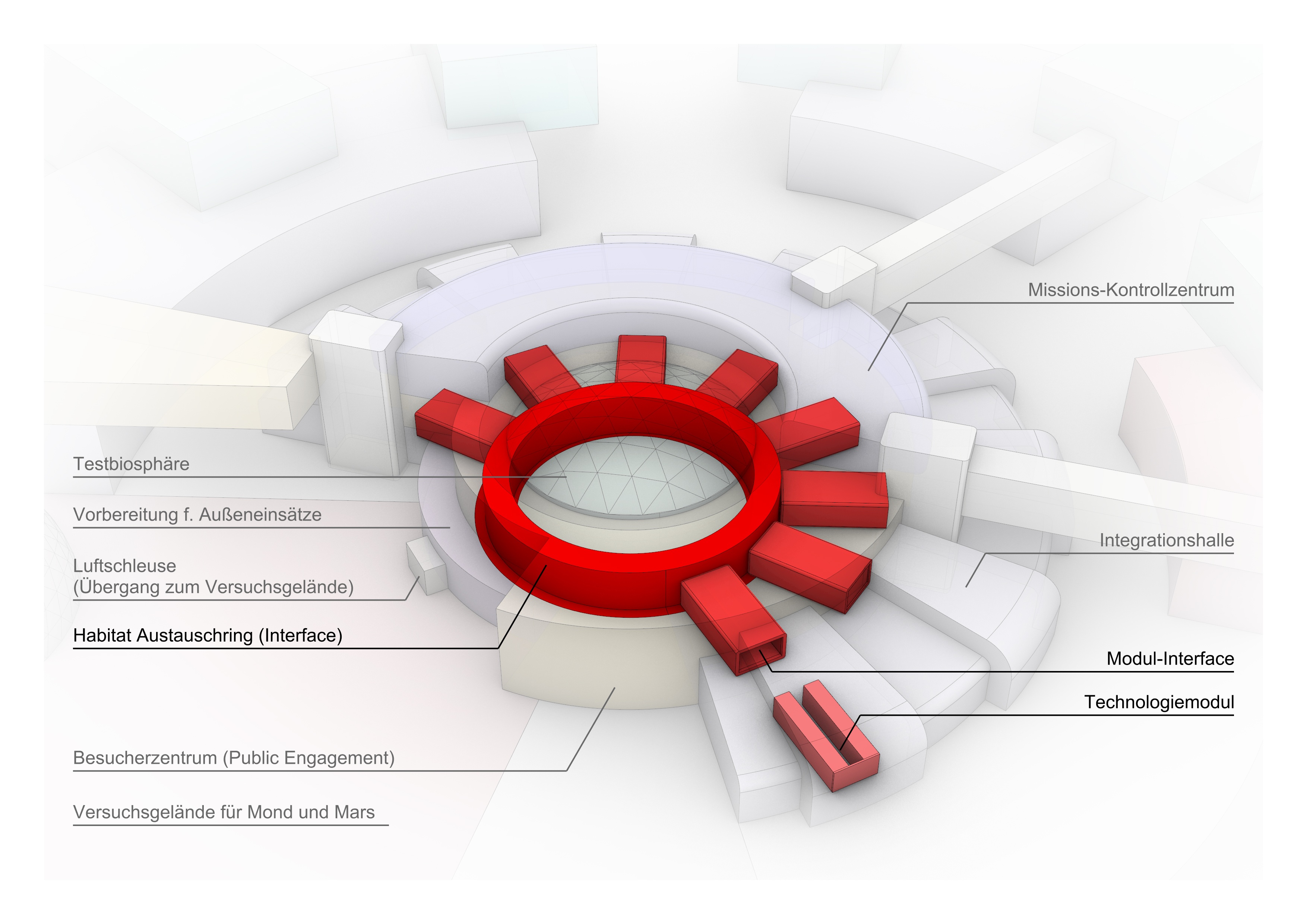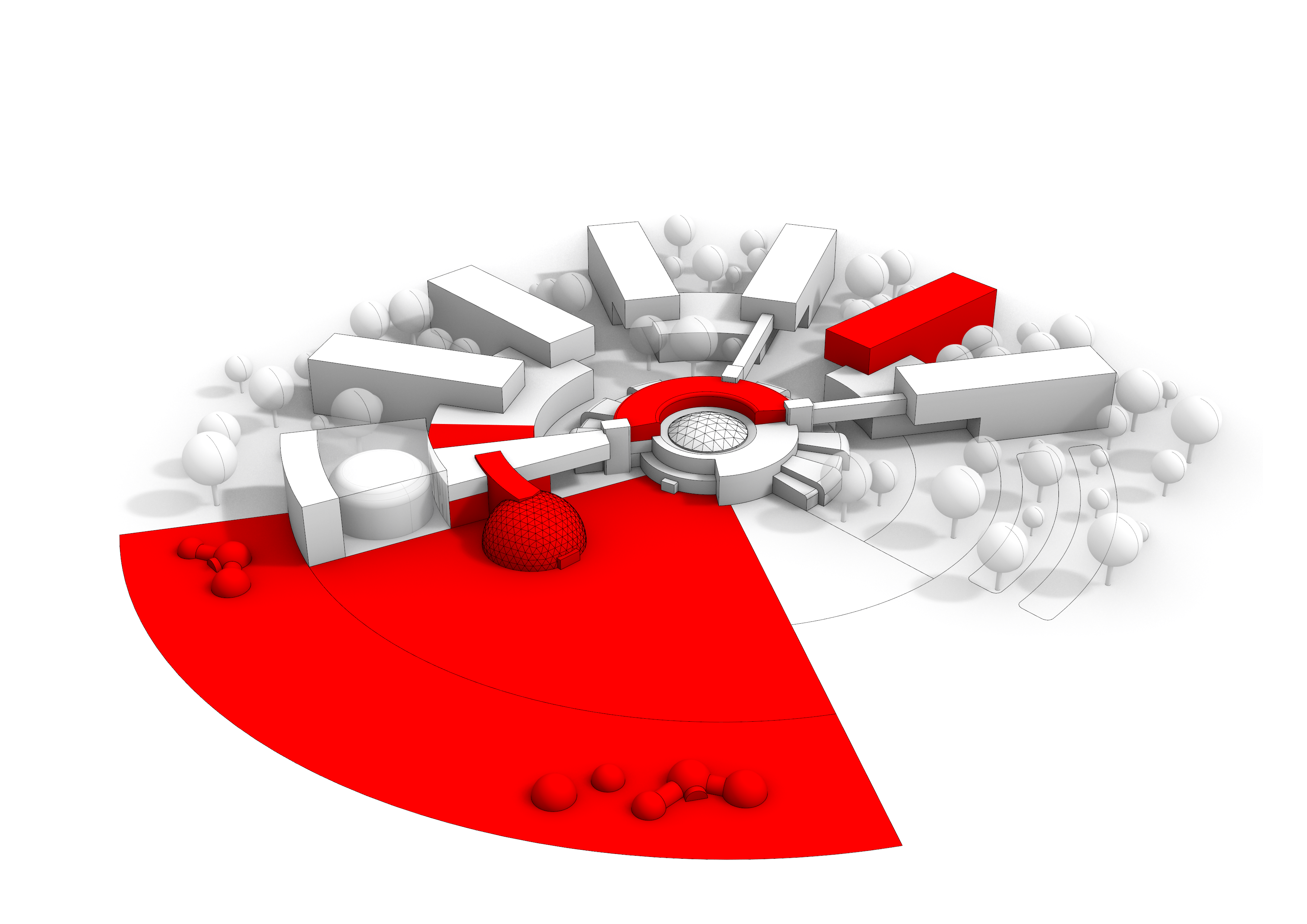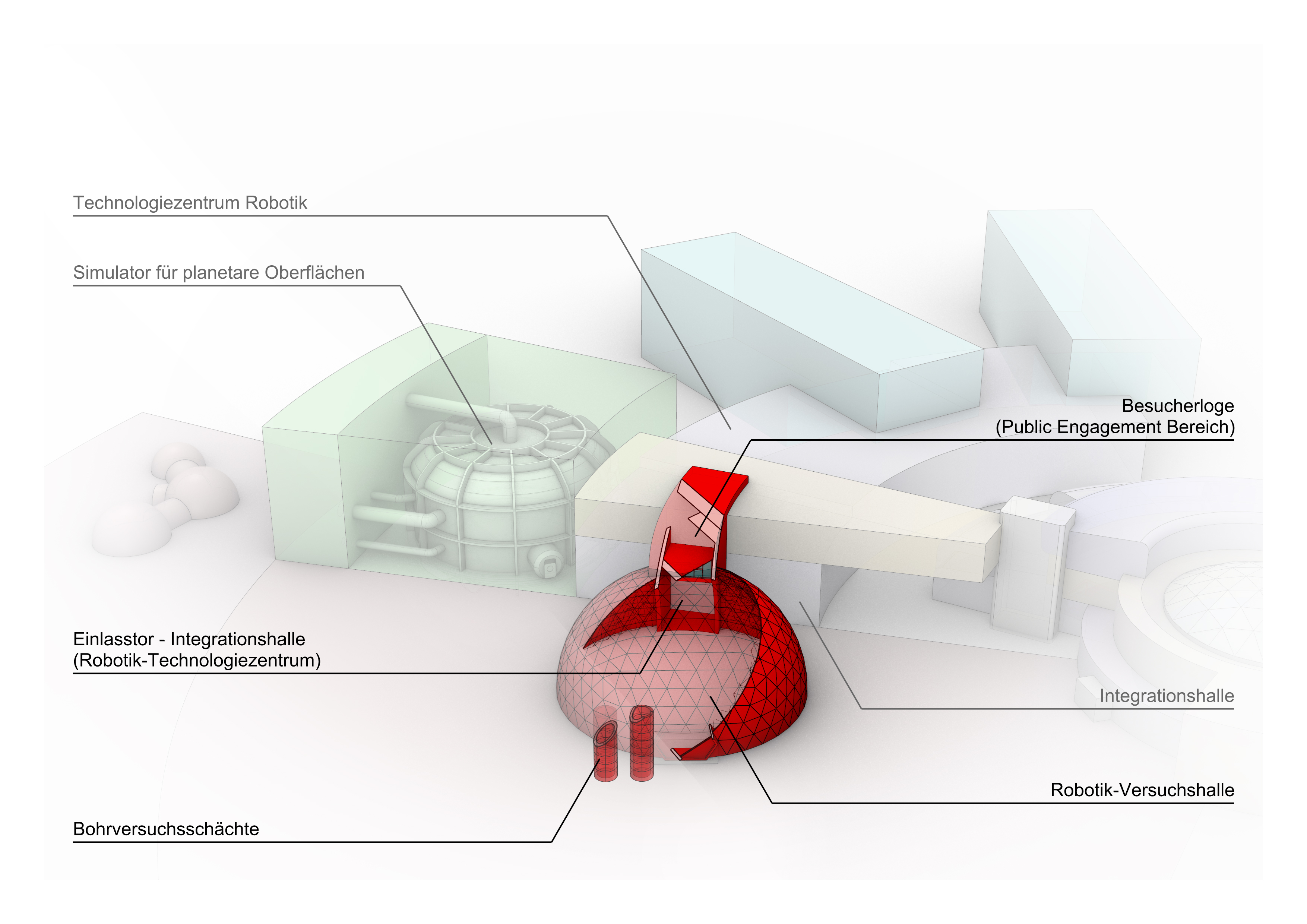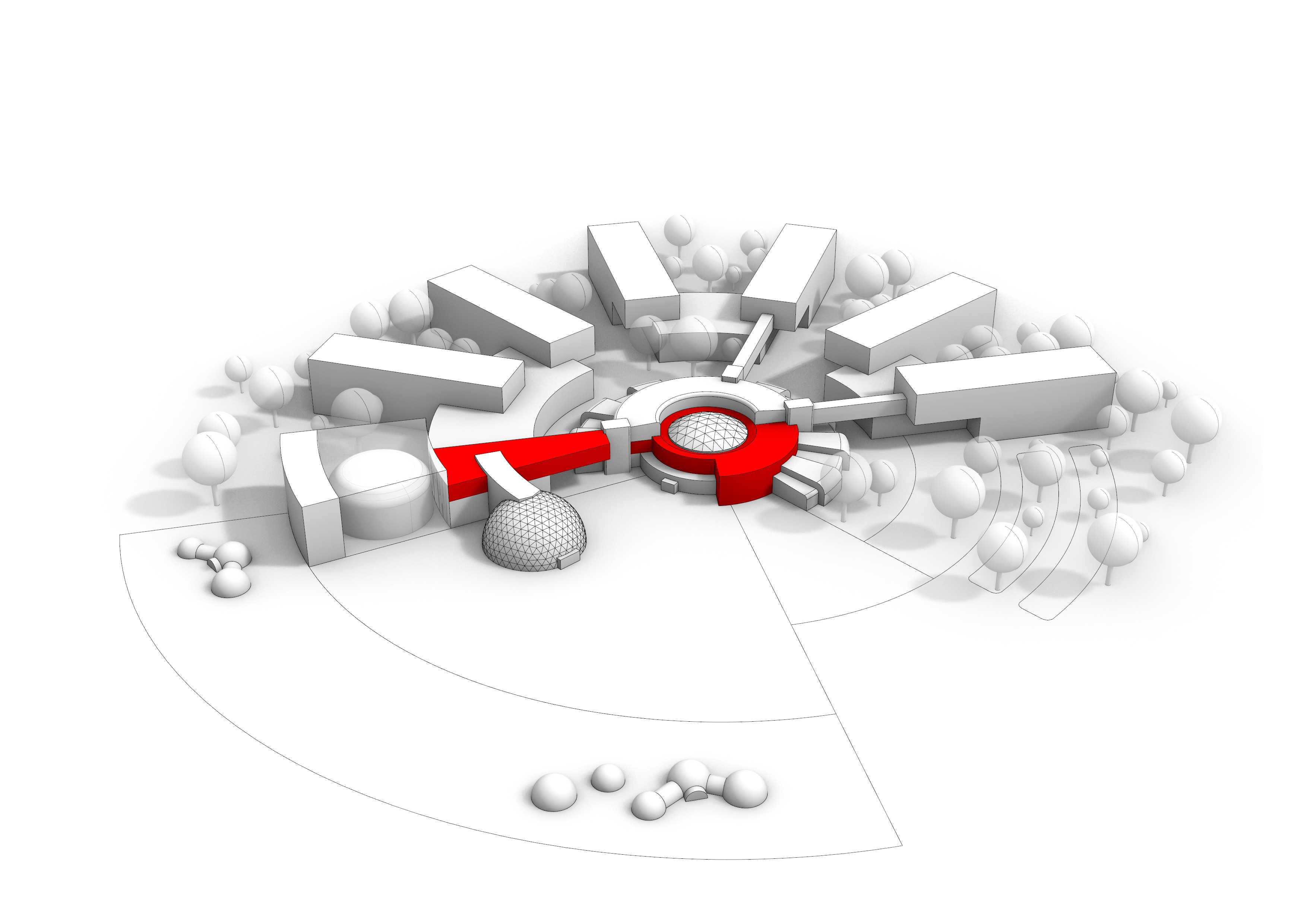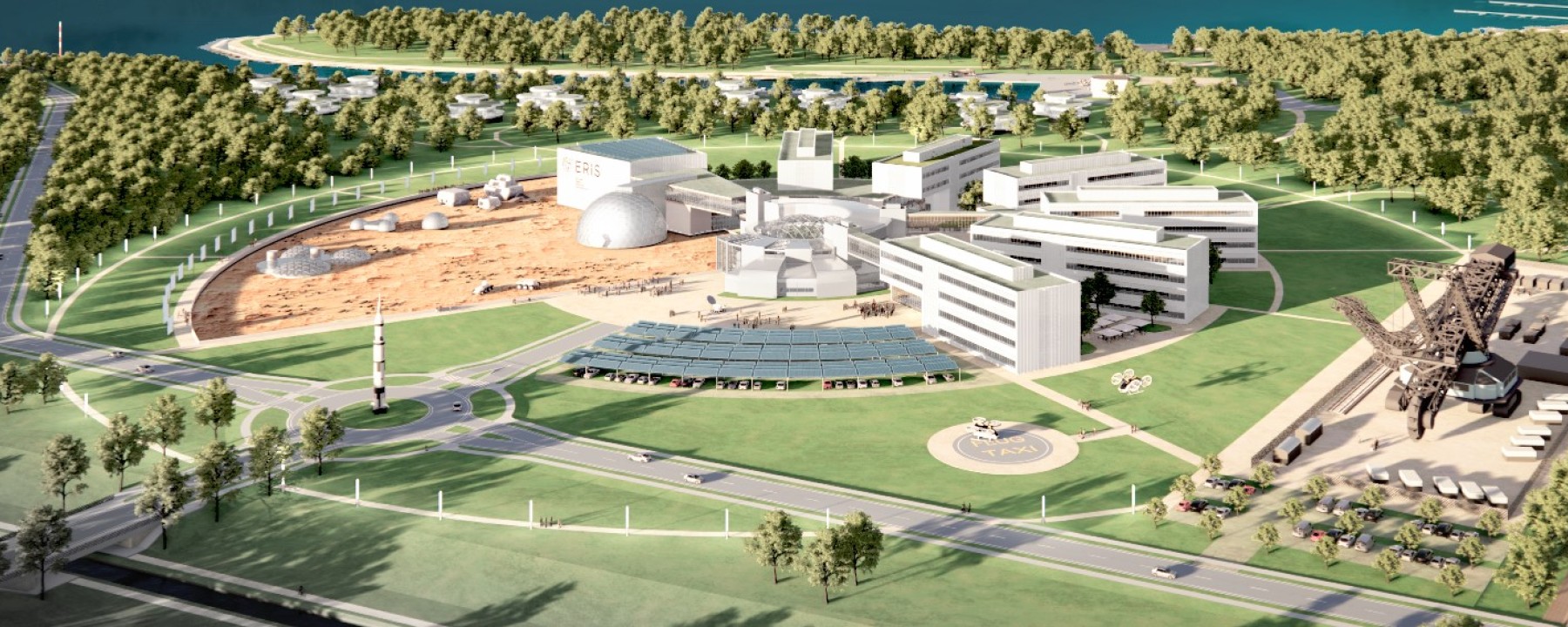
ERIS Research Facility

»By bringing together research on space resources and habitat technologies for the first time, ERIS opens up completely new perspectives for technology development for interplanetary space missions.«
Campus Concept
In addition to the research centre, the ERIS campus includes space for commercial start-ups and commercial settlements in the focus areas of green tech and space tech, as well as areas for residential complexes and temporary accommodation for guest scientists. This accommodation should itself also serve as a demonstrator for innovative, resource-efficient and resilient building and living concepts, and will adopt and test ideas from research in ERIS.
ERIS Research Facility
In the centre of the ERIS campus is the research building with the central infrastructure facilities as well as office and laboratory buildings for around 1,000 scientists. The compact design and the existing connections between all parts of the building promote scientific exchange across disciplines. A central mission control centre enables the monitoring and control as well as the interconnection of all test facilities, so that complex simulation missions are possible. An integrated visitor centre provides insights into the central research areas as well as memorable experiences such as virtual tours of bases on the Moon and Mars to convey awareness of the value of resources and their sustainable use.
